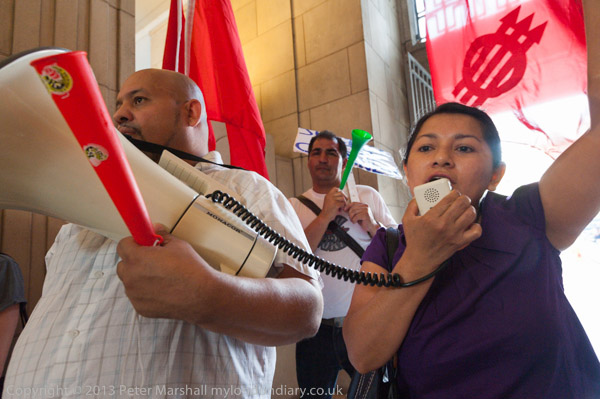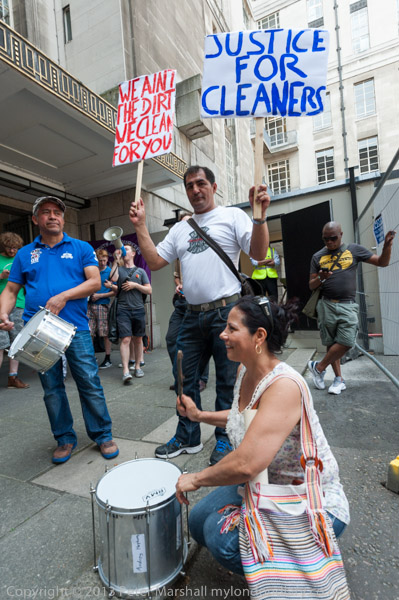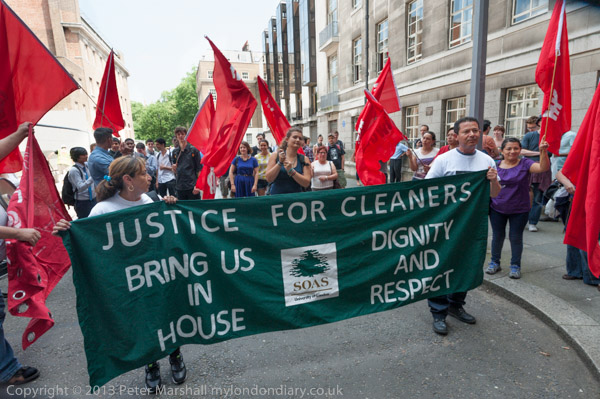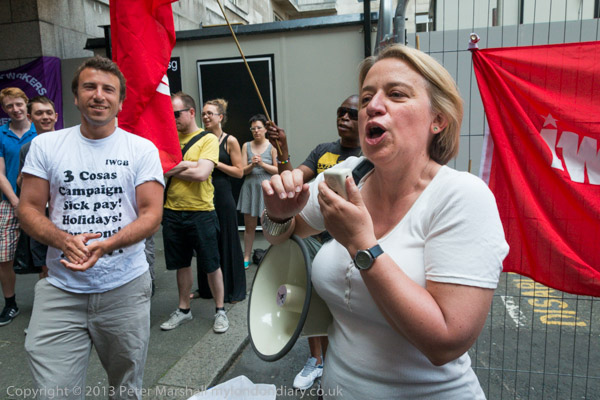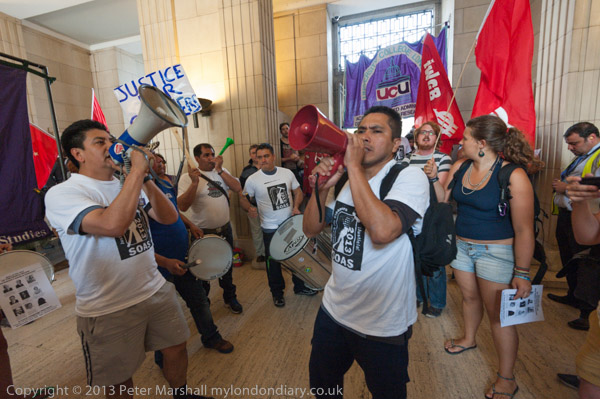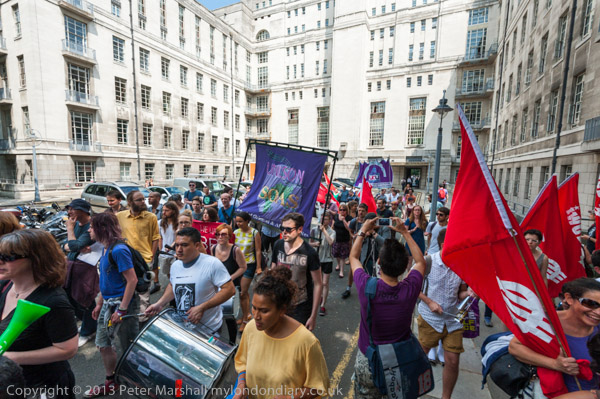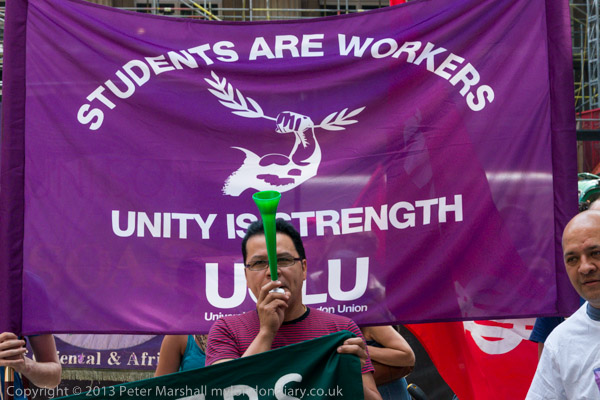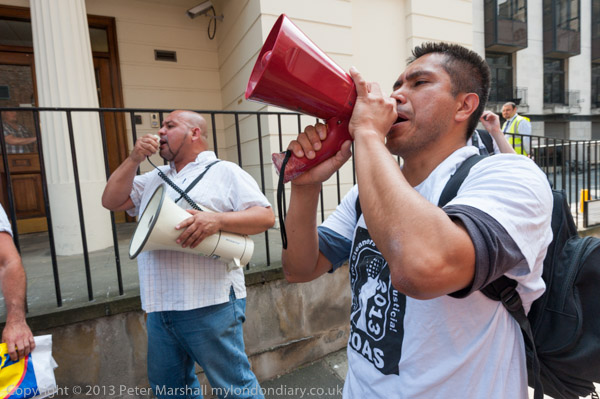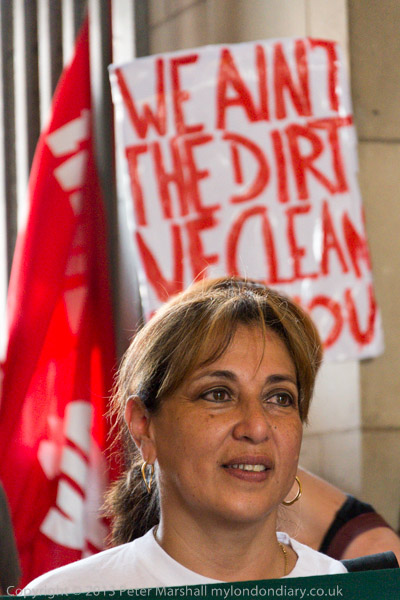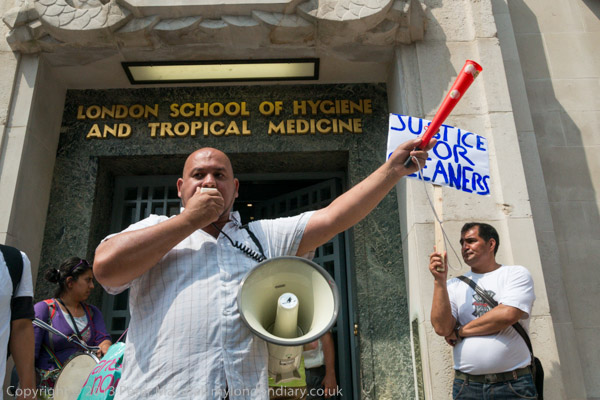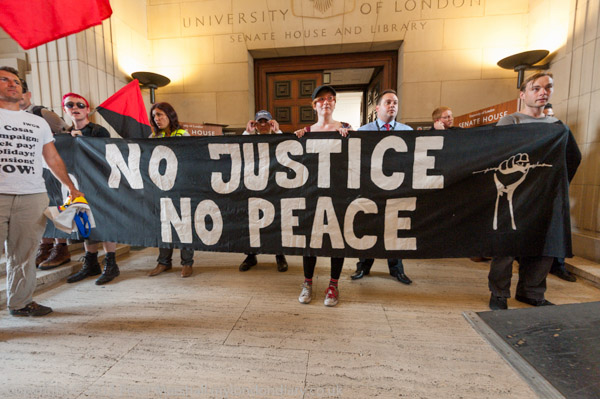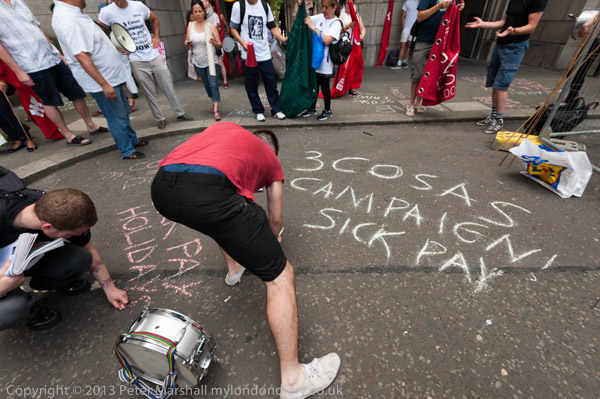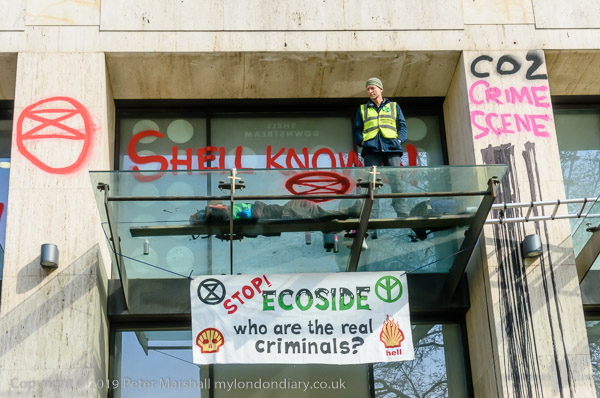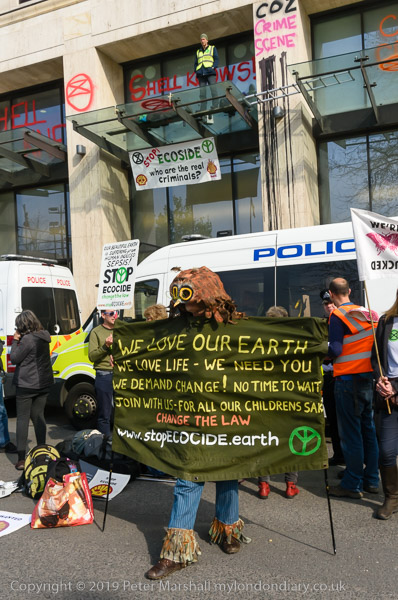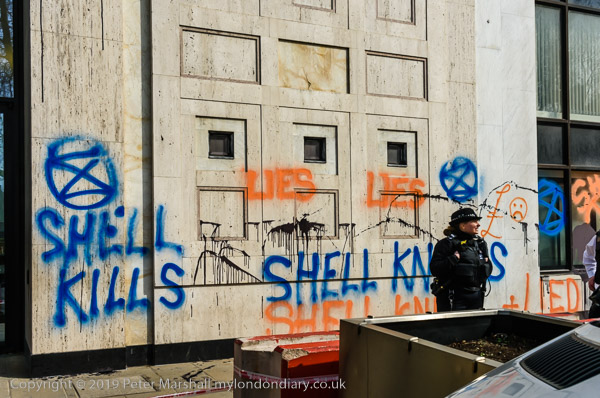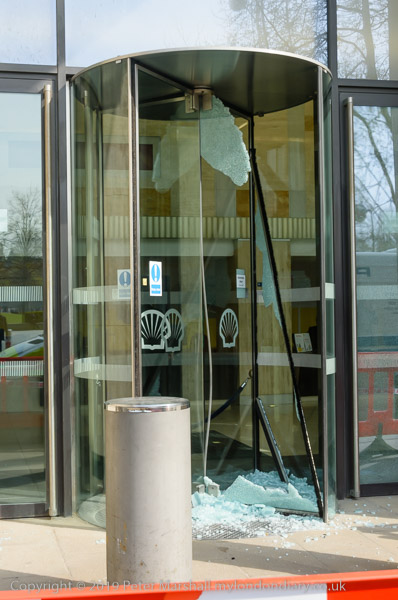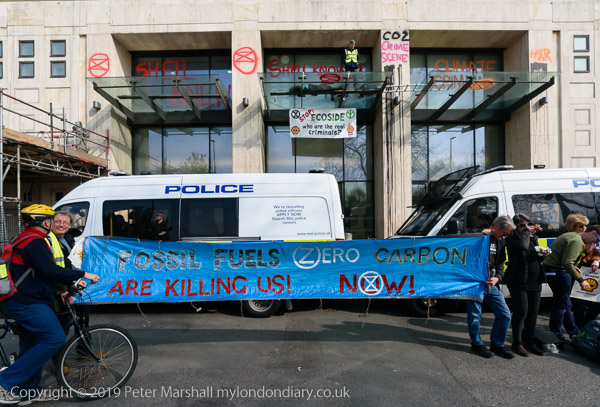Defend Our Juries Protest Palestine Action Ban: Last Saturday, 6th September, 2025 around a thousand people came to sit calmly and peacefully in Parliament Square holding signs with the message ‘I OPPOSE GENOCIDE – I SUPPORT PALESTINE ACTION’.
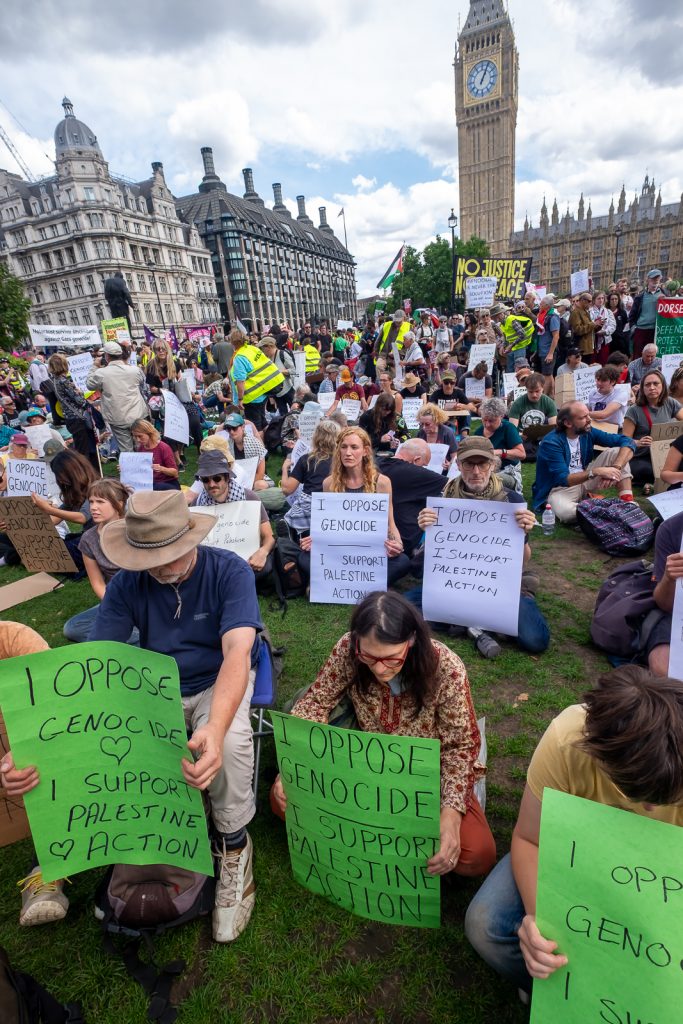
The protest was against the ban on Palestine Action imposed in July by then Home Secretary Yvette Cooper who designated the direct action group as a ‘terrorist organisation’ following extensive and dishonest lobbying from arms manufacturers and the Israeli government. Yvette Cooper is said to have received £215,000 from the Israel lobby last year.
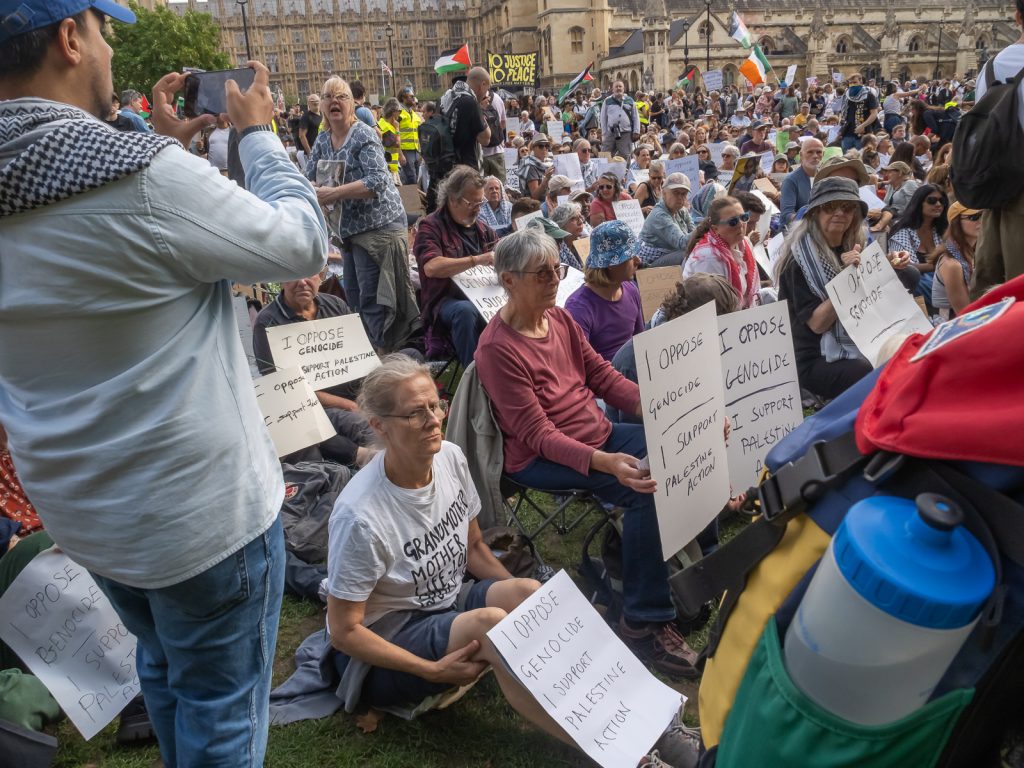
The protest was the second mass protest in Parliament Square organised by Defend Our Jories, (DOJ) an organisation set up to defend the jury system against attempts by the government to “violate the most basic principles of natural justice and the right to a fair trial.“
The jury system is designed to “put the moral intuitions of ordinary people at the heart of the criminal justice system“. As DOJ says, “when juries have heard evidence of why people have taken direct action to advance climate or racial justice, or to stop genocide in Gaza, they have repeatedly reached not guilty verdicts.”
“These verdicts are deeply embarrassing to the government and the arms and oil industries, contradicting the narrative that the public supports the ‘crackdown on protest’. Lobbyists for the arms and oil industries, such as Policy Exchange, embedded within government, have been working to put a stop to them.”
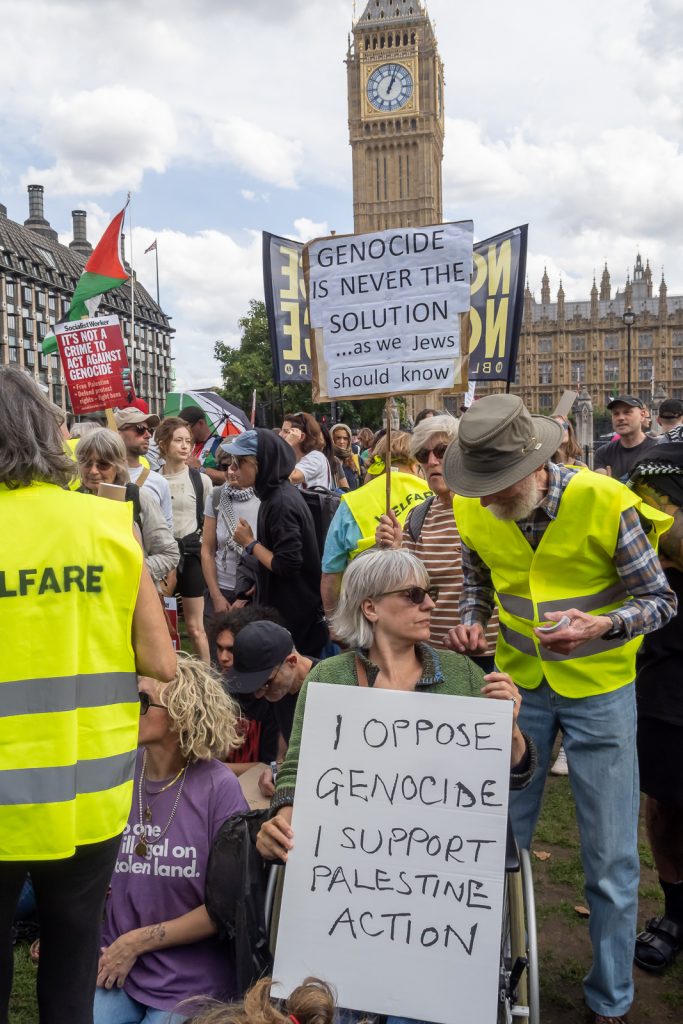
As they say “extraordinary measures have been taken that violate the most basic principles of natural justice and the right to a fair trial“, with judges telling juries that they cannot acquit a defendant as a matter of conscience, and in at least one case threating the jury with criminal proceedings if they did so.
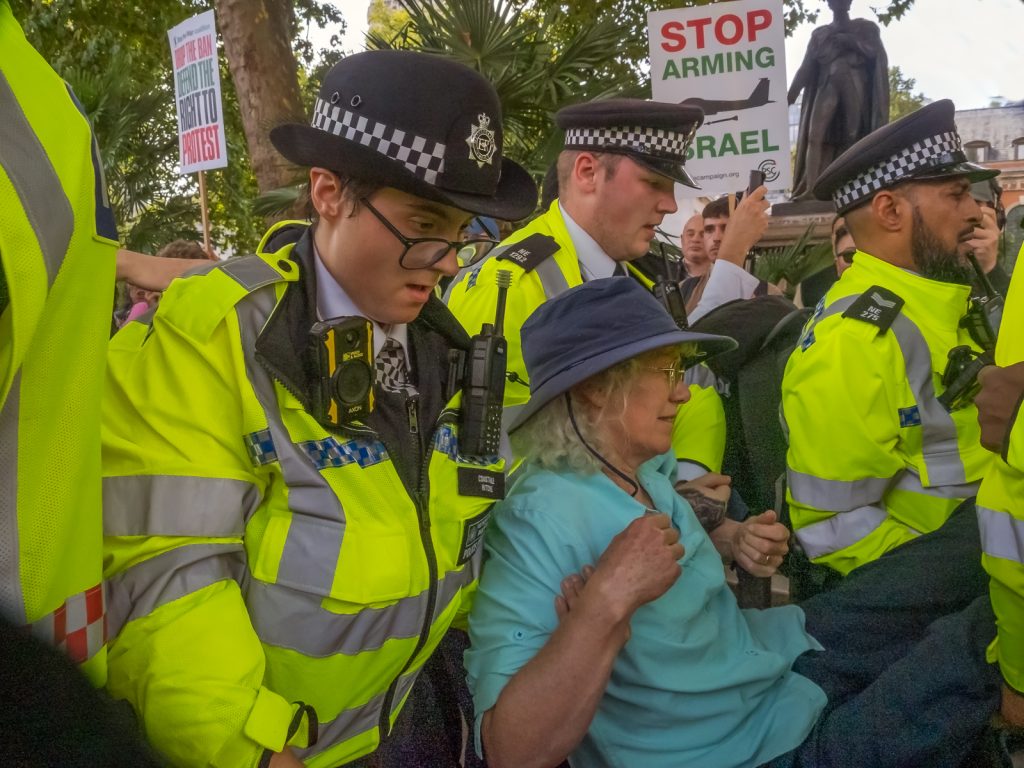
Defendants have been banned from mentioning climate change in court and two Insulate Britain members were jailed for 7 weeks for doing so. Giovanna Lewis, a town councillor from Dorset told judge Silas Reid why she had defied his ruling, “I continue to be astonished that today in a British court of law, a judge can or would even want to ban and criminalise the mention of the words ‘fuel poverty’ and ‘climate crisis’. I wanted to bring public attention to the scandal of thousands of deaths in the UK due to fuel poverty and thousands of deaths around the world due to climate change. There is no choice but to give voice to the truth.”
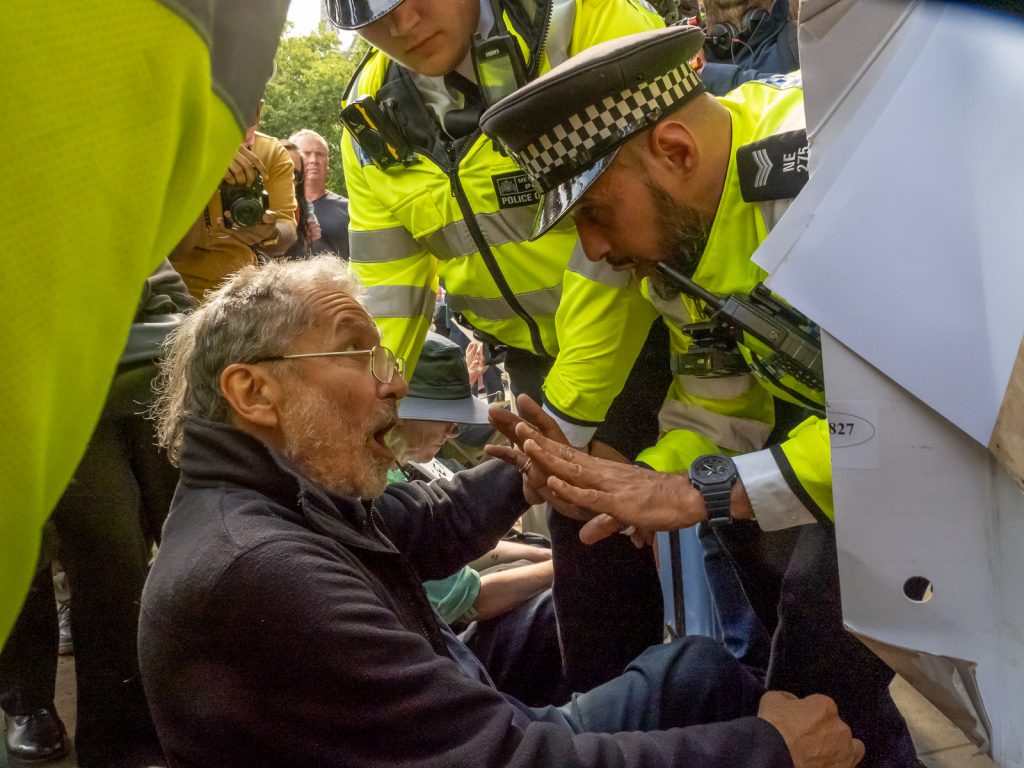
The UN have declared that this violates international law, and carried out a mass protest after Trudy Warner was prosecuted for holding a sign “Jurors you have an absolute right to acquit a defendant according to your conscience” outside the trial of Insulate Britain activists, re-stating the principle of ‘jury equity’. This had been enshrined in a English law since 1670 as a memorial at the Old Bailey states. Eventually the High Court rejected the government’s application to send her to prison.
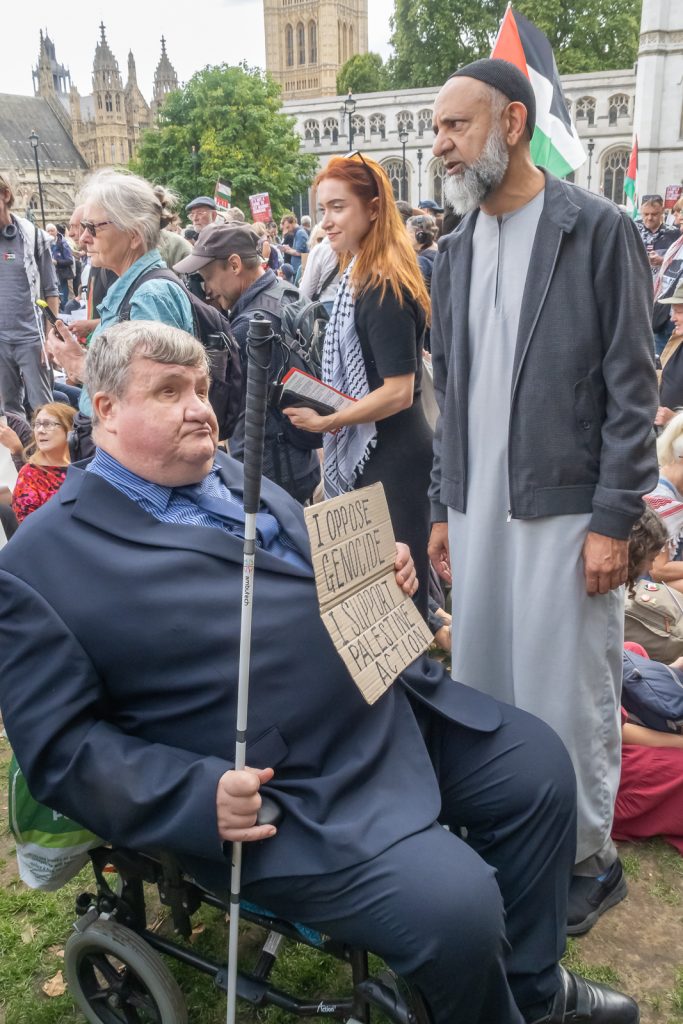
The protests by DOJ against the ban on Palestine Action in August and last Saturday were both entirely peaceful. Those taking part had come to be arrested and sat waiting for the police to do so. But a crowd of supporters in the square were appalled at the way in which the police did so, with snatch squads going into the protest and picking on individuals seemingly at random.
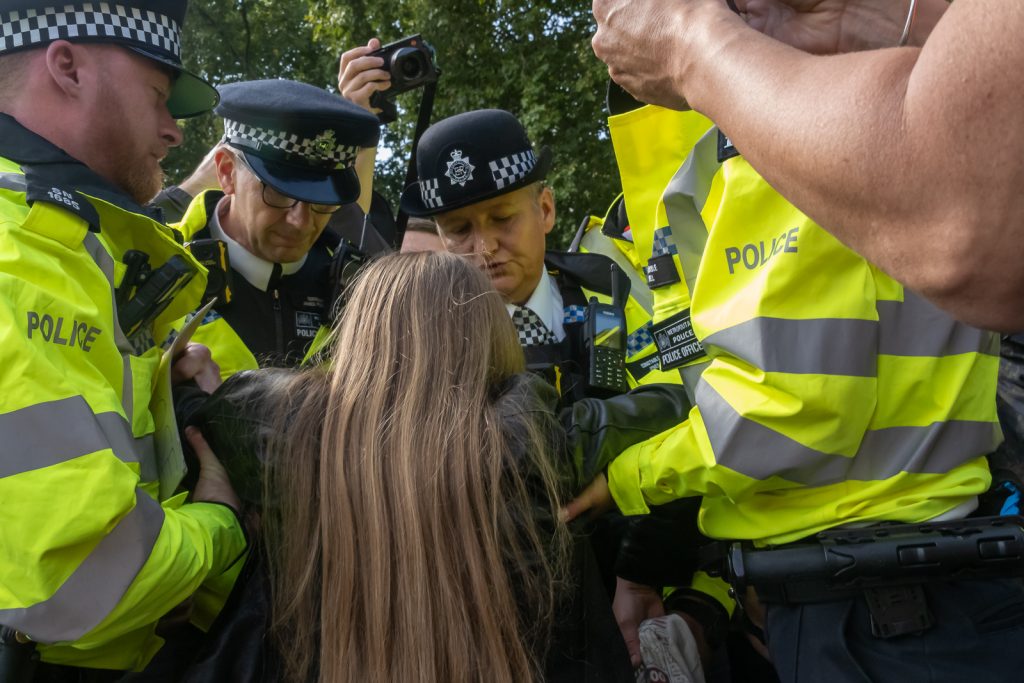
The squads were soon surrounded by crowds, many intent on recording the arrests on cameras and mobile phones, many shouting ‘Shame on You‘ at the police for their actions. While other police simply stood around the perimeter of the square and watched in silence, some clearly uneasy about what was happening, those making the arrests sometimes reacted violently to the crowds around them. I saw one officer lashing out with his baton, though his colleagues soon stopped him.
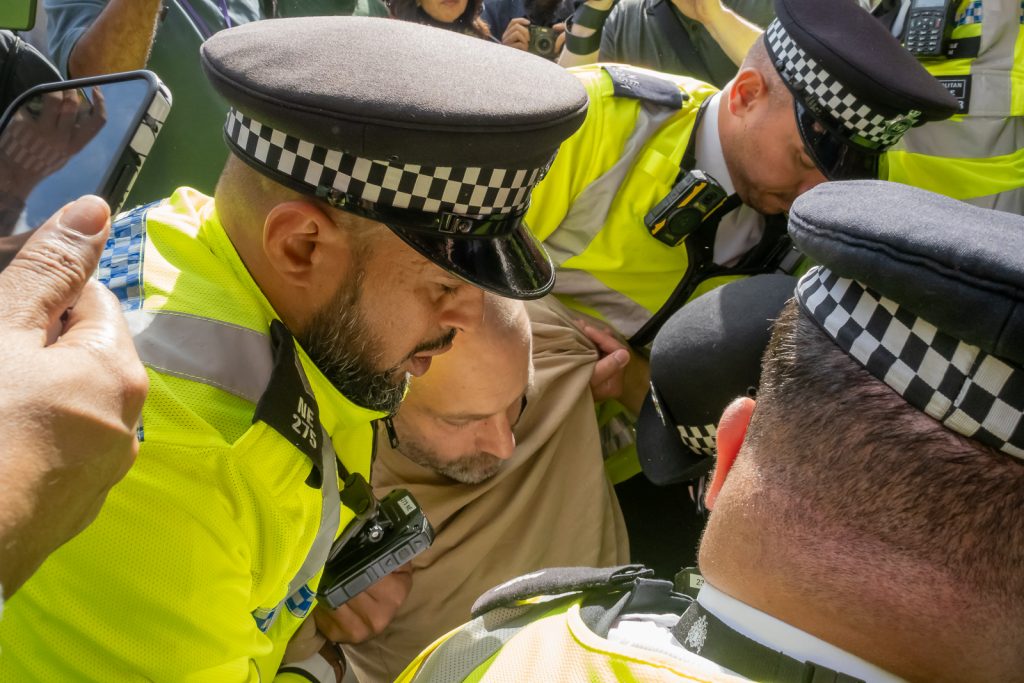
It was difficult to understand the police tactics. Rather than go about making arrests in an organised and systematic manner by using the very large forces present to surround an area of the protest and carry out the arrests within that cordon, they appeared to have decided to do their job in the most provocative manner possible. Perhaps it was to put on a display for their political masters – and our now Home Secretary Shabana Mahmood was impressed as she watched the screens in the police control room.
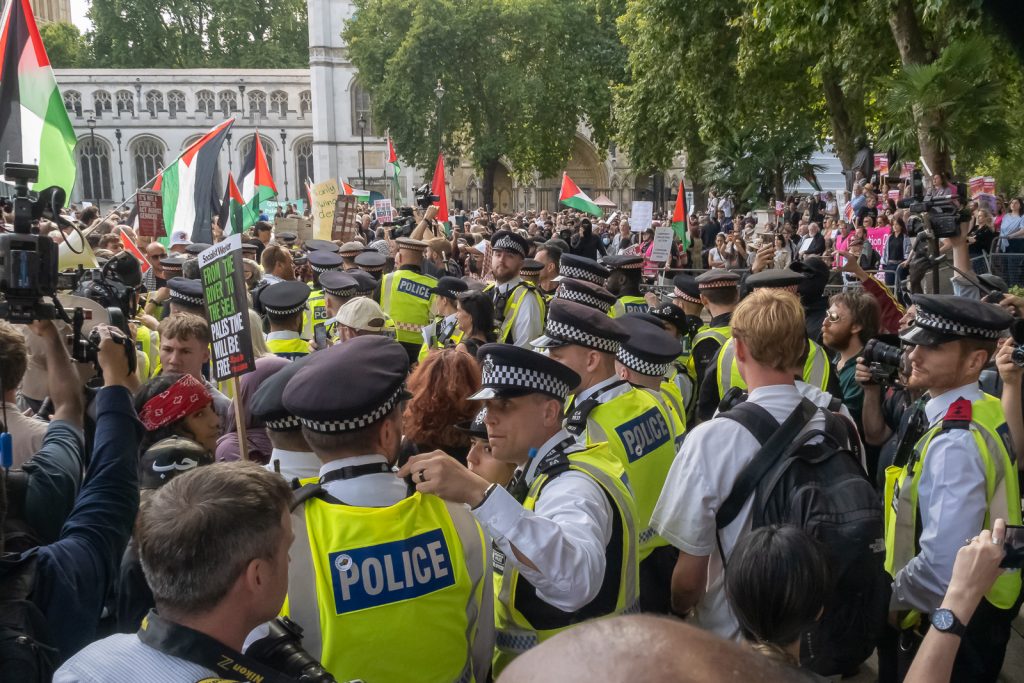
I think they had decided to arrest first some particular individuals in the crowd – perhaps those who were in breach of bail conditions from the previous month’s protest. But nobody present was trying to evade arrest – the 1500 (according to DOJ) had all come to be arrested, although I think almost half got fed up with waiting and left. Others were still being arrested seven hours after the protest began.
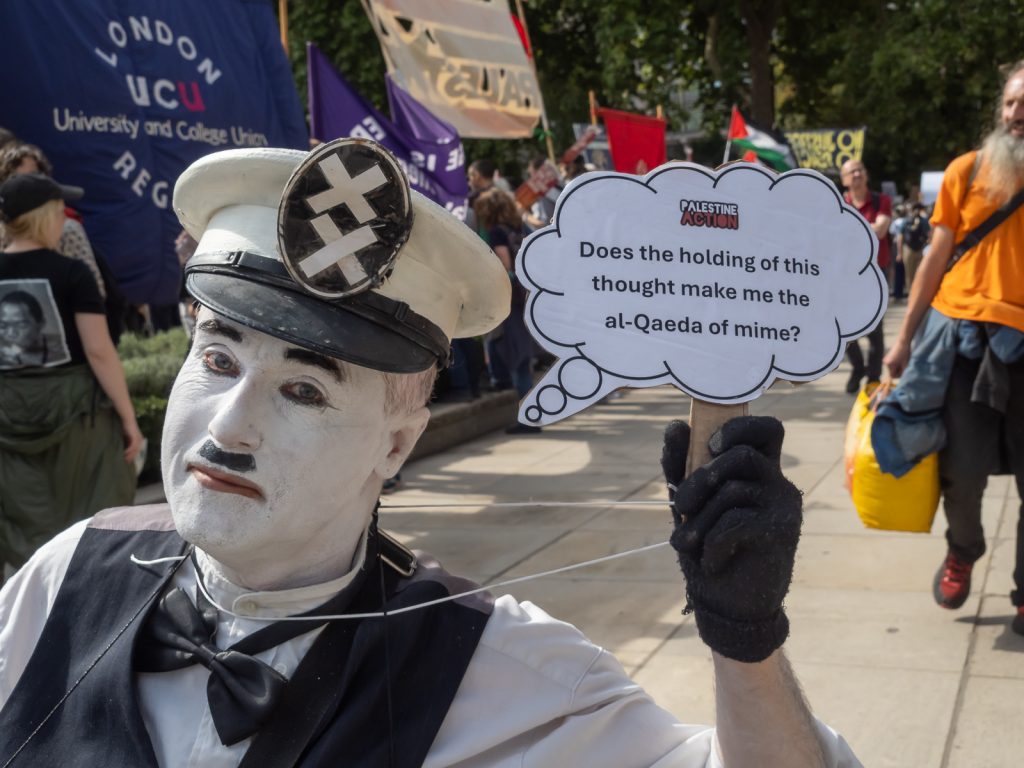
I left after watching for almost an hour to photograph the Palestine march, with around 200,000 people slowly marching towards the rally in Whitehall. Later that afternoon I uploaded around thirty images of this protest to Alamy and these together with a few more to a Facebook album.
One of the founders of Palestine Action has been granted an appeal against the ban – although the government is appealing against her right to appeal – almost certainly because they fear it will succeed. I hope for the future of our legal system and country it does.
Flickr – Facebook – My London Diary – Hull Photos – Lea Valley – Paris
London’s Industrial Heritage – London Photos
All photographs on this page are copyright © Peter Marshall.
Contact me to buy prints or licence to reproduce.
